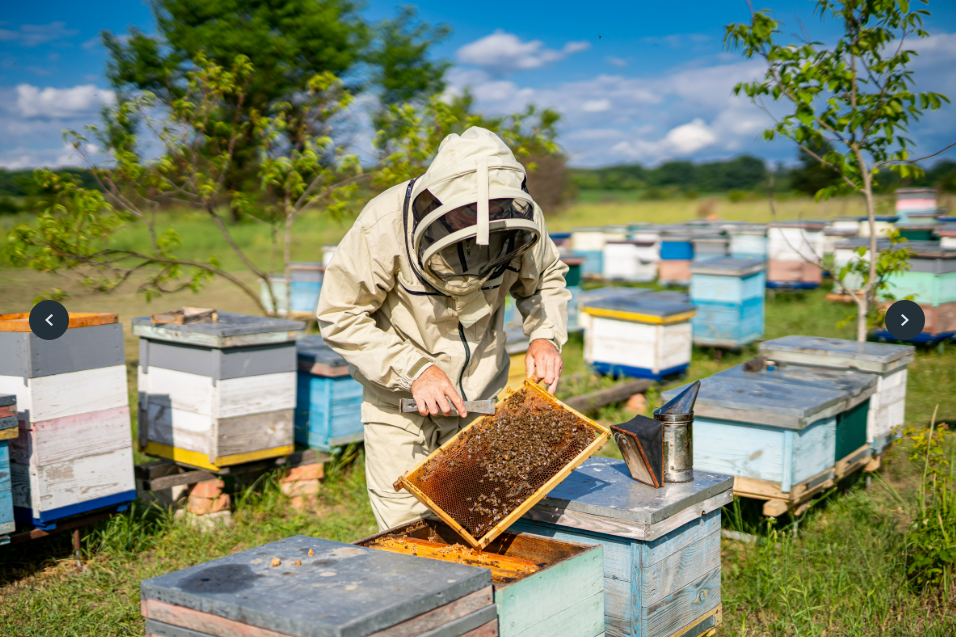
The Beginnings of our Beekeeping Adventure
Share
Our Beekeeping Journey: From a Nebraska Classroom to a Buzzing BackyardHey there, friends! I’m excited to share the story of how my wife, Cynthia, and I fell in love with beekeeping—a hobby that’s brought us closer to nature, filled our pantry with golden honey, and taught us some humbling lessons along the way. As the owners of Triple J’s Hemp Solutions here in Lincoln, Nebraska, we’re all about living mindfully and embracing the outdoors, and beekeeping fits right into that flow. So, grab a cup of tea (maybe with a drizzle of honey!), and let me take you through our journey, from a community college course to savoring our homemade mead.The Spark: A Beekeeping Course in LincolnAbout nine or ten years ago, I signed up for a year-long beekeeping course at Southeast Community College right here in Lincoln, Nebraska. It was one day a month, guiding us through the entire beekeeping season—spring blooms to winter prep. The course was a goldmine, covering everything from hive setup to seasonal tasks and connecting me with resources like local suppliers and beekeeping groups. I learned the ins and outs of what bees need each month, from swarm prevention in May to wrapping hives for Nebraska’s chilly winters. It also opened my eyes to challenges like Varroa mites—tiny pests that latch onto honeybees, spreading diseases and weakening hives. Those little critters are a big reason why many hives don’t survive winter, especially if left untreated.The Early Years: Going Natural and Learning the Hard WayFor the first five to seven years, I was determined to keep things natural. No chemicals, no treatments—just pure, organic beekeeping. I believed it was the best way to keep our honey clean and let the bees thrive on their own. But Nebraska winters are brutal, and my “treatment-free” approach led to some tough lessons. Out of those early years, I only had a couple of hives survive a single winter, and never two winters in a row. I’d start each spring hopeful, only to find empty hives by April, often because the bees starved when the queen ramped up egg-laying in late winter, depleting their honey stores. It was heartbreaking to lose those buzzing colonies after watching them work so hard.A Shift in Strategy: Treating Hives and Finding BalanceAfter years of stubbornness, I decided to start treating for Varroa mites to give my bees a fighting chance. Last year, I had nine hives and used a 21-day treatment to combat those pesky mites. Even so, I lost six hives over the winter—leaving me with just three. But here’s the silver lining: those three hives marked the second winter in a row that I had survivors, which felt like a small victory. Beekeeping has taught me that sometimes “going with the flow” means adapting and finding balance, even if it’s not what you originally planned. Now, I treat strategically but still keep things as natural as possible, ensuring our bees have plenty of their own honey to get through the cold.The Joy of Beekeeping: Honey, Teamwork, and TranquilityBeekeeping isn’t just about the honey (though, trust me, that’s a sweet perk). It’s about the calm that washes over you when you’re suited up, standing among thousands of bees working together like a perfectly choreographed team. If that’s not teamwork, I don’t know what is! It’s soothing, almost meditative, to watch them buzz about, each with a role in keeping the hive thriving. Time-wise, it’s not demanding—checking hives, monitoring for pests, and harvesting honey takes just a few hours a month. But the rewards? Endless. Our first year with three hives gave us about seven gallons of honey. Last year, with nine hives, we harvested around 20 gallons. I always leave at least two supers of honey for the bees to survive winter, so they never go hungry. The rest? We share it generously with friends and family—no selling for us, just spreading the love.A Sweet Bonus: Crafting Mead with CynthiaOne of the coolest parts of our beekeeping adventure has been experimenting with our honey. A couple of years ago, Cynthia and I decided to try our hand at mead, the oldest form of alcohol made from fermented honey. We made a batch of plain honey mead, and after aging for two years, we tasted it recently—let’s just say it’s pretty darn good! This year, we’re thinking of making a raspberry mead using berries from our backyard. We also grow grapes, which yield about 20 gallons of juice a year, so we might even venture into winemaking next. It’s amazing how our love for beekeeping has sparked new projects, blending our passion for nature with a little creativity.Why We Keep GoingNine years in, beekeeping still lights us up. It’s not just about the delicious honey or the occasional sip of homemade mead—it’s about the connection to nature and the quiet lessons the bees teach us. They remind us to work together, adapt to challenges, and trust that things will fall into place. As we grow Triple J’s Hemp Solutions, we carry that same “go with the flow” spirit into our CBD business, inspired by the resilience and harmony we see in our hives.If you’re curious about beekeeping or want to chat about how our Nebraska-grown, nature-loving vibe shapes our CBD products, drop by triplejhemp.com or catch us at a local farmers market like Haymarket or College View. We’d love to share a jar of honey—or at least a story or two—about our buzzing friends!
